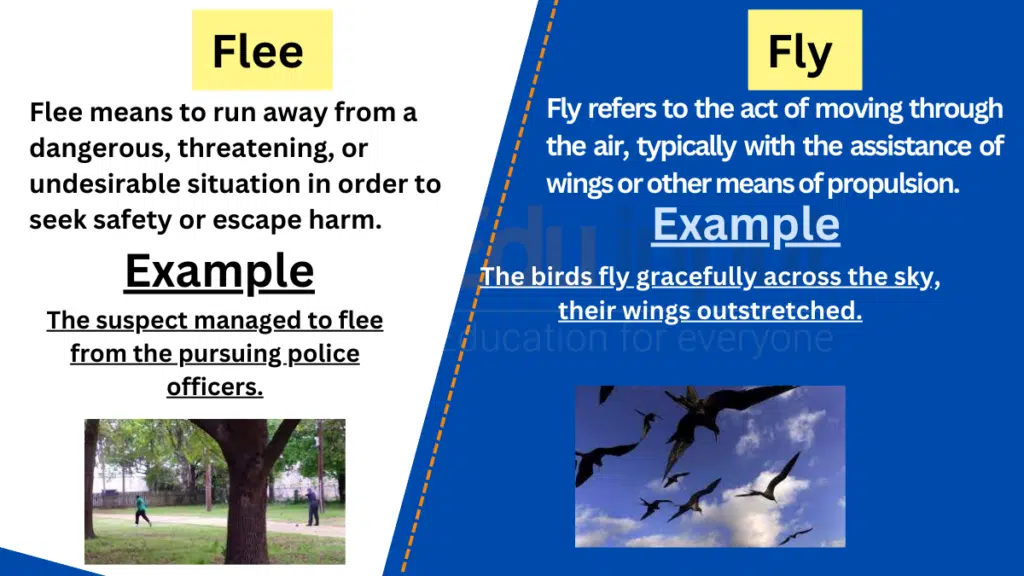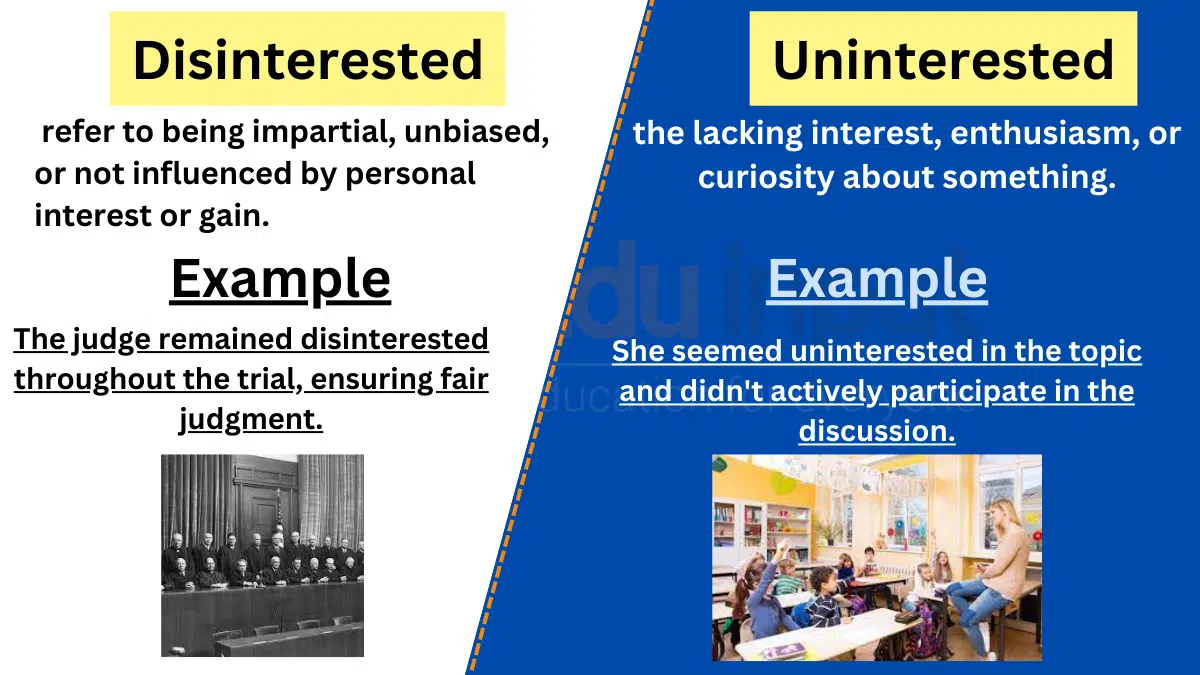Flee vs. Fly-Difference between and Examples
The words “flee” and “fly” are often confused due to their similar spellings and association with the movement. However, they have distinct meanings and usage in the English language. This article aims to clarify the difference between “flee” and “fly” by providing clear definitions, examples, and practical insights. By understanding their unique connotations, we can use these words correctly and communicate our intentions effectively.

Meanings and Examples
Flee meaning
Flee means to run away from a dangerous, threatening, or undesirable situation in order to seek safety or escape harm.
Flee Examples
a) The villagers had to flee their homes due to the approaching wildfire.
b) Upon seeing the snake, the hiker quickly fled in fear.
c) The suspect managed to flee from the pursuing police officers.
Fly meaning
Fly refers to the act of moving through the air, typically with the assistance of wings or other means of propulsion.
Fly Examples
a) The birds fly gracefully across the sky, their wings outstretched.
b) The airplane will fly to its destination in a few hours.
c) The kite soared high in the sky as the wind carried it.
Difference between Flee and Fly
| Flee | Fly | |
| Meaning | To run away from danger or undesirable situation | To move through the air with wings or propulsion |
| Example | “The villagers had to flee their homes…” | “The birds fly gracefully across the sky…” |
| Usage | Describes an escape from danger or threat | Describes movement through the air |
| Connotation | Carries a sense of urgency or desperation | Carries a sense of motion or flight |
Usage in a Paragraph
As the storm approached, the residents were filled with fear and had to make a difficult decision. They had to flee their coastal town to seek safety inland. Families hastily packed their belongings, leaving behind their homes and memories. The sound of sirens filled the air as people fled in cars, seeking refuge from the impending disaster. Meanwhile, a flock of birds soared above, gracefully flying toward warmer climates. Their wings beat in unison as they navigated the vast expanse of the sky. The contrast between the fleeing residents and the free-flying birds painted a vivid picture of the different forms of movement in the face of nature’s forces.
Understanding the difference between “flee” and “fly” is crucial for accurate communication. “Flee” denotes running away from a dangerous or undesirable situation, seeking safety and escape. In contrast, “fly” refers to movement through the air, often facilitated by wings or other means of propulsion. By using these words correctly, we can convey the actions of escaping danger or moving through the air with clarity. Recognizing the distinctions between “flee” and “fly” enhances our ability to express ourselves accurately and ensures that our intended message is effectively communicated.







Leave a Reply